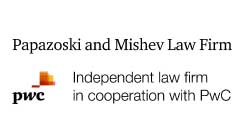We can all think of names like Champagne or Feta cheese that are intrinsically linked to the geographical origin of a product and the know-how of its producers, often passed on over many generations.
While many of these Geographical Indications (short: GIs) concern wines, spirits, foodstuffs and other agricultural products, the qualities attributed to specific local skills and traditions can also relate to non-agricultural products, such as jewellery, cutlery, glass, porcelain, textiles, lace, natural stones, woodwork, or hides and skins. Previously, the EU's GI protection scheme did not cover craft and industrial products. This will now change when the EU regulation on GIs for craft and industrial products enters into force on 16 November 2023 (applicable from 1 December 2025), meaning it will be possible also for "non-agri" GIs to be granted protection on an EU level.
A look down the EU's GI protection lane
Efforts to harmonise GIs at the EU level have existed for decades and have resulted in a comprehensive set of rules for the protection of wines, spirits, foodstuffs and other agricultural products. Depending on a product's connection to the designated area in terms of its raw materials, reputation and history, GIs may be protected as
- Protected Designations of Origin ("PDO", for food and wines);
- Protected Geographical Indication ("PGI", for food, wines, craft and industrial products); or
- Geographical Indication ("GI", for spirit drinks).
Unlike the typical intellectual property rights, PDOs, PGIs and GIs are usually not reserved for one entity (although there are exceptions). Rather, GI protection as a whole is designed to protect a group of producers who comply with the requirements of the relevant geographical and production specifications.
Once registered, GI protection goes beyond preventing any use which may cause actionable detriment under trademark law. For example, registered names of GIs can also be defended against any misuse, imitation or evocation, even if the consumer is not misled about the origin of the products or services (e.g. by using the name in combination with expressions like "style" or "method"). As an illustrative example of the scope of protection: The CJEU stated that GI protection for Queso Manchego (La Mancha Cheese) could be infringed even if only the appearance of a product allowed a connection to the region concerned (in such case by showing indications, which – because such were famous for the Don Quixote de La Mancha tales – can be related to the La Mancha region).[1] Furthermore, GI protection also prevents any other false and misleading indication as to the provenance, origin, nature or essential qualities of the product or any other practice liable to mislead the consumer as to the true origin of the product.
What's coming
Although existing EU rules already provide comprehensive protection of GIs for wines, spirits, foodstuffs and other agricultural products, the EU Commission is intent on modernising[2] and strengthening the existing system of GI protection even further. Most notably, it aims to introduce uniform registration procedures for GIs, to foster the role of producer groups and to allow and protect the use of product specifications that relate to sustainability. Moreover, there are plans to bring GI protection to the digital age, which include protection against bad faith registrations and use of GIs in the domain name system. But while these efforts at reform are worth following, the biggest milestone is the extension of the EU GI protection scheme to craft and industrial products.
The new milestone
So far, protection of non-agri GIs was left to the member states, which led to very different standards and means of protection throughout the single market. While some countries such as France implemented a sui generis protection scheme for craft and industrial products, producers in other member states had to rely on alternative protection mechanisms, such as unfair competition law or the registration of (collective) trademarks.
Following the new Regulation on GI protection for craft and industrial products[3], these different levels of protection will become obsolete.
Scope of non-agri GI protection
Under the new rules, which have been drafted in accordance with the existing provisions for wines, spirits, foodstuffs and other agricultural products, names of craft and industrial products will be eligible for sui generis GI protection, if
- the product originates in a specific place, region or country;
- its given quality, reputation or other characteristic is essentially attributable to its geographical origin; and
- at least one of the production steps of the product takes place in the defined geographical area.
Well-known examples of such product names include Murano glass, Donegal Tweed or Solingen knives. However, non-agri GIs of non-EEA countries may also be protected under the new framework, provided they meet the relevant requirements and are protected in their country of origin. Notably, in many third countries, a majority of GIs relate to non-agri products. Thus, the EU's new protection scheme will have great significance also on an international level.
In addition to the scope of GI protection provided for agricultural products (see above), the new rules for craft and industrial products explicitly address domain names containing or consisting of the registered GI.
Registering non-agri GIs
In accordance with the objective of introducing a uniform protection scheme for non-agri GIs, the registration procedure will be harmonised as well. While the EUIPO will be the central registration office, the standard application procedure will have two phases, the first of which involves a national authority.
Applications are to be submitted with a designated national authority. These national authorities are further granted substantial powers as they are mandated with conducting a first assessment and opposition procedure, before ruling in favour or against the application on a national level.
If the outcome on a national level is positive, parties (producer groups or, in special cases, individual producers) will then be able to file either a complaint or an application at the EUIPO, which will conduct EU-wide opposition procedures and, in the end, issue the final decision. If an application for GI protection of a non-agri product name is successful, the name will be included in a publicly accessible electronic register of GIs.
In deviation from the standard procedure, it is also possible in certain cases to file a direct appeal to the EUIPO. This especially concerns countries that do not have GI protection frameworks given that there is little demand from local producers to register GIs.
In a nutshell
Building on existing rules and experiences, new EU legislation will extend the GI protection to craft and industrial products. In geographic terms, the scope of application goes beyond the EU member states, as the producers in non-member states will also be entitled to apply for a registration of their third country GIs.
By Anna Katharina Tipotsch, and Antonia Hirsch, Associates, Schoenherr






















